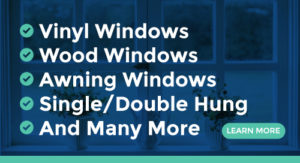
Energy Efficient Windows: How Replacing Your Windows Can Save You Money
Replacing your windows can provide a number of benefits for your home, including improved energy efficiency. In this blog post, we will explore the ways in which replacing your windows can save you money on your energy bills.
Compare PricesLower Energy Bills
One of the most significant ways in which replacing your windows can save you money is by lowering your energy bills. Energy-efficient windows are designed to keep heat in during the winter and out during the summer, which can help to reduce the amount of energy you need to heat and cool your home. This can lead to significant savings on your energy bills, especially over time.
Reduced Carbon Footprint
Another way in which replacing your windows can save you money is by reducing your carbon footprint. Energy-efficient windows can help to reduce the amount of energy you use, which can lower your carbon footprint and help to protect the environment.
Tax Credits and Incentives
Many states offer tax credits and incentives for homeowners who install energy-efficient windows. These can include rebates, credits, or deductions on your state income taxes. It’s worth checking if your state has any such programs and if your replacement windows qualify to maximize your savings
Improved Comfort
Not only can energy-efficient windows save you money on your energy bills, but they can also improve the comfort of your home. When your windows are properly sealed and insulated, you’ll experience fewer drafts, noise, and temperature fluctuations, which can make your home more comfortable to live in.

Replacing your windows with energy-efficient windows can provide a number of benefits for your home, including significant savings on your energy bills. By keeping the heat in during the winter and out during the summer, energy-efficient windows can help to reduce the amount of energy you need to heat and cool your home.
Additionally, they can also reduce your carbon footprint and improve the comfort of your home. Be sure to check if there are any tax credits or incentives available in your state as well. Replacing your windows is an investment, but it can save you money in the long run and make your home more comfortable.
Compare PricesTypes of Energy Efficient Windows: Choosing the Right One for Your Home
When it comes to upgrading the windows in your home, one of the most important considerations is energy efficiency. In this blog post, we will explore the different types of energy-efficient windows available and their cost, to help you make an informed decision when it comes to replacing your windows.
- Double-Pane Windows
Double-pane windows are one of the most popular types of energy-efficient windows. They consist of two panes of glass with a sealed space in between, which acts as an insulator. This can help to keep heat in during the winter and out during the summer, which can lead to significant savings on your energy bills. They usually come in a variety of styles and materials, and their cost range from $200 to $800 per window.
- Low-E Windows
Low-E windows are designed to reflect the sun’s rays, which can help to keep your home cooler during the summer. They have a low emissivity coating that reflects the sun’s rays back out of your home, which can help to reduce the amount of energy you need to cool your home. They are also more expensive than Double-pane windows and can range from $300 to $1000 per window.
- Fiberglass Windows
Fiberglass windows are another popular option for energy-efficient windows. They are made from a composite material that is known for its durability and energy efficiency. They are also resistant to warping and fading, which can help to make them a long-lasting investment. They cost a little more than low-E windows, ranging from $350 to $1200 per window.
- Vinyl Windows
Vinyl windows are an affordable option for energy-efficient windows. They are made from PVC, which is a type of plastic that is known for its durability and energy efficiency. They are also easy to clean and maintain, which can help to make them a cost-effective option over time. Their price usually ranges from $200 to $600 per window.

Do Energy-Efficient Windows Really Work?
When it comes to upgrading the windows in your home, one of the biggest selling points is energy efficiency. But do energy-efficient windows really live up to their promises? In this blog post, we’ll take a closer look at the research and case studies to determine the effectiveness of energy-efficient windows.
Compare PricesCase Studies of Energy-Efficient Windows
One way to measure the effectiveness of energy-efficient windows is through case studies. One such study, conducted by the National Renewable Energy Laboratory, found that energy-efficient windows can reduce heating and cooling costs by 7-15% (NREL, 2018). Another study by the Lawrence Berkeley National Laboratory found that energy-efficient windows can reduce cooling costs by 20-25% (LBNL, 2017). These studies demonstrate that energy-efficient windows can have a significant impact on energy savings.
Energy Star Certification
Another way to determine the effectiveness of energy-efficient windows is by looking at the Energy Star certification. Energy Star is a government-backed program that helps consumers identify energy-efficient products. To earn the Energy Star label, windows must meet certain energy performance criteria, which are determined by the U.S. Department of Energy. By choosing Energy Star certified windows, homeowners can be confident that they are getting a product that has been independently tested and verified to be energy efficient.

Cost-Benefit Analysis
It’s also important to consider the cost-benefit analysis of energy-efficient windows. While they may have a higher upfront cost, the long-term energy savings can outweigh the initial expense. A study by the National Institute of Standards and Technology found that energy-efficient windows can pay for themselves in as little as 3-5 years (NIST, 2016).
In conclusion, there are a variety of energy-efficient windows available, each with its own unique benefits and costs. When choosing the right type of energy-efficient windows for your home, it’s important to consider your budget and your specific needs. Be sure to consult a professional for more detailed information about the cost and suitability of the window type for your home.
Compare Prices

Leave a Reply